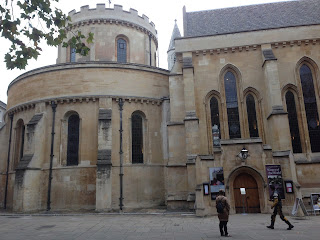After answering email and making calls I was finished by 12:30.
So off to Spitalfields Market again, this time early enough to see the market in full sale mode.
It a well cover market with lots of well organised stalls aimed at the tourists
With plenty of good food stalls.
Today, it was a London Box. 2 Salads - Brown Rice and pulled chicken cooked in pomegranate juice.
Most of the Stalls are Clothing or Book stalls. Jennifer would love this market.
After getting back to the Library , I finished the day early.
So it was another shot at getting the Temple Church.
This time the yard was open.
But it was still closed for the private service.






